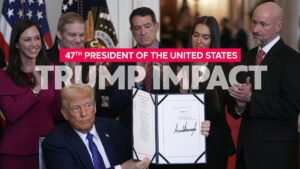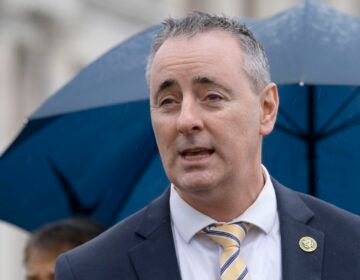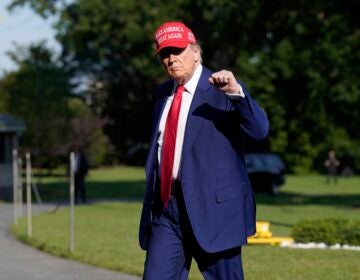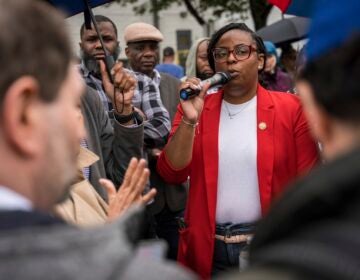Intersecting demonstrations in Philly attest to polarizing views, potential for violence
Listen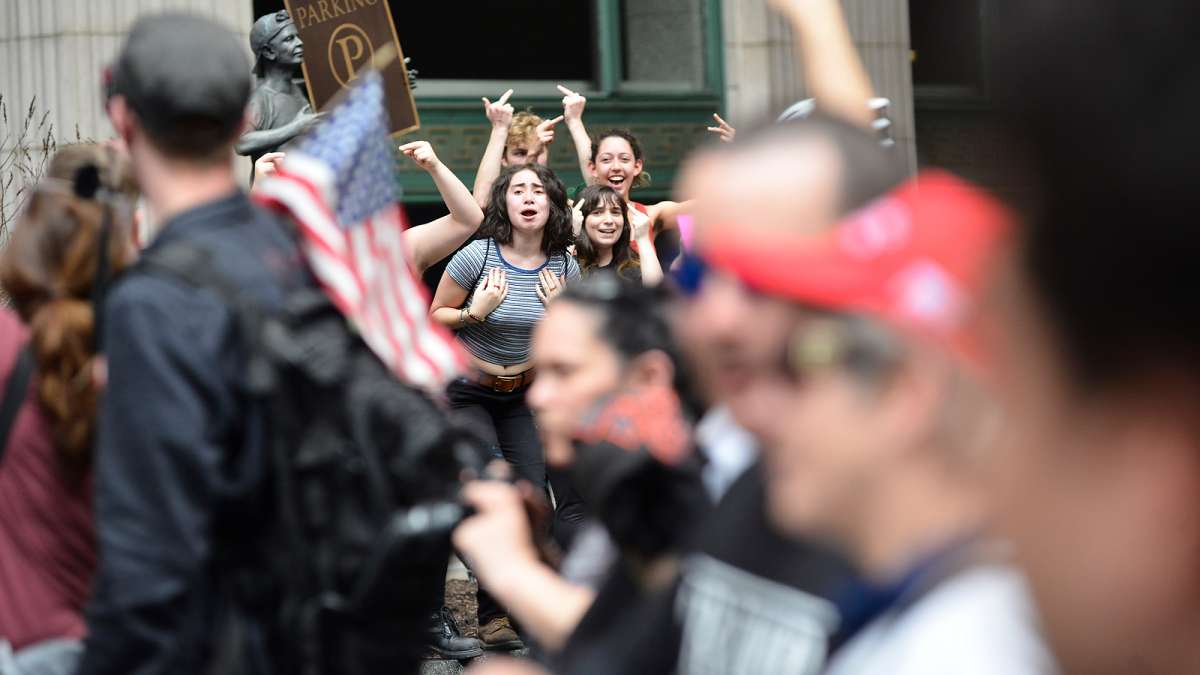
Demonstrators who support President Donald Trump and those protesting his policies converge in Philadelphia Saturday. (Bas Slabbers for NewsWorks)
Philadelphia Chief Inspector Melvin Singleton had to act fast.
On Saturday, roughly halfway between the Philadelphia Museum of Art and Independence Hall, a group was demonstrating its support of President Donald Trump. To the north and south of them, masked, anti-Trump protesters descended on the Center City march with one goal in mind: Shut it down.
Singleton managed to keep his officers between the warring groups, so they never came to blows. Which is good, because both sides appeared ready for a street fight.
Some wore arm pads, masks and hoods shielding their identities.
“Both are trying to accomplish a goal with the other goal being to hinder the goal of one group,” said Singleton, who had to act on the fly throughout the hours-long standoff.
“That nuance was different and it created a heightened concern for the possibility of violence, for the possibility of property damage.”
Likelihood of bloodshed rising
Now that Trump has moved from candidate to president, there’s heightened concern that this kind of behavior may lead to violent demonstrations from both sides. A clash in Huntington Beach, California, did turn violent over the weekend.
Todd Gitlin, who teaches journalism and sociology at Colombia University, said the near collision in Philadelphia Saturday has some dangerous historical echoes — the years immediately preceding the start of Nazi Germany, for example.
“In the case of Weimar Germany, you had organized armies, you had paramilitary armies of which the best-armed and most dangerous and successful were proto-Nazis after Hitler’s rise to power became absorbed into the state,” he said.
We’re not there yet, said Gitlin.
“This is out of the playbook of autocratic regimes. I’m not saying that anyone is known to be planning such a thing. I’m not saying it’s likely,” he said. “I’m saying it’s possible.”
Ralph Young, a history professor at Temple University, is also worried by Saturday’s protests. The potential for violence is concerning, but also what it would do to the grassroots political process.
“When people are violent with each other, if they kind of attack each other in this way, they’re just going to turn off the people who are the middle-of-the-roaders — the moderates that maybe don’t agree with either of these two wings,” said Young.
“They’re not going to win any converts.”
Demonstrations, dissent show no signs of abating
The pro-Trump march in Philadelphia was organized by Make America Great Again, a national organization that held similar events around the country over the weekend.
That prompted a counterprotest by activists describing themselves as anti-fascists. Participants from that camp have a history of showing up at pro-Trump and white nationalist events — to disrupt them.
The march brought out roughly 100 pro-Trump demonstrators. There were about twice as many anti-Trump protesters.
Asa Khalif, who leads Pennsylvania Black Lives Matter, was among the latter. He said his group was prepared to defend itself on Saturday, and it will be prepared to defend itself in the future.
“Anywhere they show up, we’re going to show up,” said Khalif. “We don’t accept Donald Trump. He is not our president and we don’t respect him, and we don’t honor the office that he represents.”
Efforts to reach MAGA protesters were unsuccessful.
Philadelphia Mayor Jim Kenney said Monday that both sides have the “right to express their opinions” and the police will work to keep everyone safe.
WHYY reporters Peter Crimmins and Tom MacDonald contributed to this story.
WHYY is your source for fact-based, in-depth journalism and information. As a nonprofit organization, we rely on financial support from readers like you. Please give today.



